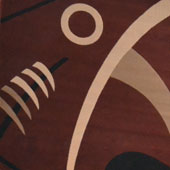Design Resource
Carpet Weaving - Bhadohi
The Art of Weaving
by
Prof. Ravi Mokashi Punekarwith Ashish Yadav
Machinery and Hand Tools:
The type of machinery & equipment used in the production process are hand looms, broad looms, dyeing machine, Finishing Machine, Washing Equipments like scrapping machine. Loom is a wooden frame supporting the warp on which weaving of the carpet is done. Various types of hand tools like knife for cutting the yarn while tying the knots, a comb like tool for packing down the knots of weft while weaving, a pair of shears for trimming the yarn, tufting machine which resembles a large scissor are required for the process of carpet making. Majority of the machinery suppliers exist outside the cluster.
Wool:
The major raw material used for the carpet making is the yarn which is made of wool. Yarn is either procured from local spinning mills or from Bikaner and Surat through traders. The Tibetan wool has a strong, good fibre length, good luster and a high resilient value. The New Zealand wool is of 36 micron, 100 mm barb length and is identified as type 128. British wool meeting regulatory standards have also started being made available in the market. More than 90% of the yarn is purchased, dyed and supplied to weavers/tiny manufacturers by Merchant Export Firms (MEFs) and Manufacturing Export Firms (MAFs).
Dyes and Chemicals:
Dyes used for the dyeing of wool also forms one of the important raw materials. Nowadays, weavers make use of synthetic dyes like mordant dyes, vat dyes etc. and vegetable dyes. But, in earlier times weavers used natural dyes derived from indigo plant, cochineal insects, wild roses, fruits. Wool can be dyed in mechanized dyeing plants or manually by soaking in dyes and then steaming. Chemicals used in chemical and mechanical finishing are supplied through dealers and distributors operating in the cluster.





















